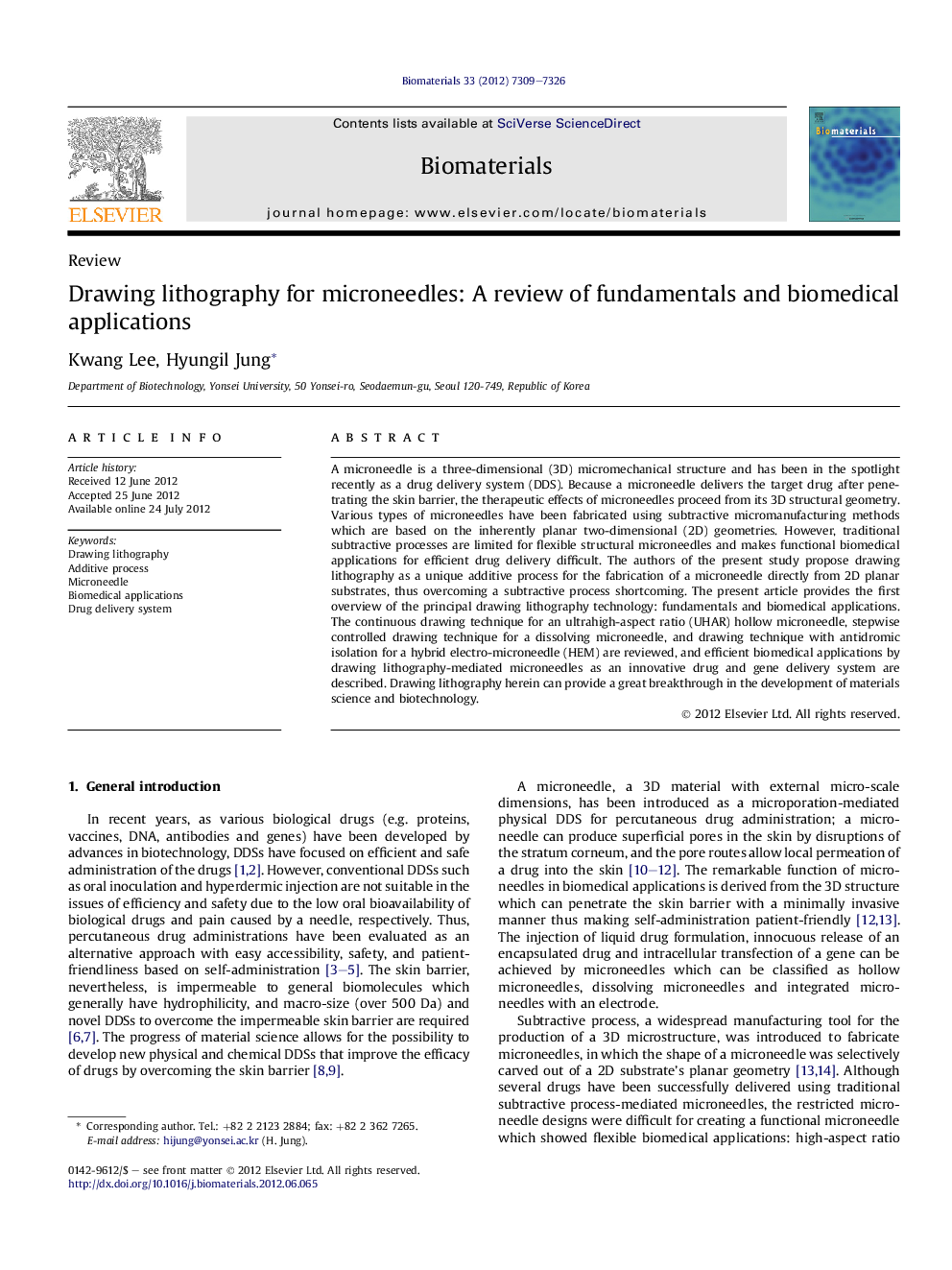| Article ID | Journal | Published Year | Pages | File Type |
|---|---|---|---|---|
| 6638 | Biomaterials | 2012 | 18 Pages |
A microneedle is a three-dimensional (3D) micromechanical structure and has been in the spotlight recently as a drug delivery system (DDS). Because a microneedle delivers the target drug after penetrating the skin barrier, the therapeutic effects of microneedles proceed from its 3D structural geometry. Various types of microneedles have been fabricated using subtractive micromanufacturing methods which are based on the inherently planar two-dimensional (2D) geometries. However, traditional subtractive processes are limited for flexible structural microneedles and makes functional biomedical applications for efficient drug delivery difficult. The authors of the present study propose drawing lithography as a unique additive process for the fabrication of a microneedle directly from 2D planar substrates, thus overcoming a subtractive process shortcoming. The present article provides the first overview of the principal drawing lithography technology: fundamentals and biomedical applications. The continuous drawing technique for an ultrahigh-aspect ratio (UHAR) hollow microneedle, stepwise controlled drawing technique for a dissolving microneedle, and drawing technique with antidromic isolation for a hybrid electro-microneedle (HEM) are reviewed, and efficient biomedical applications by drawing lithography-mediated microneedles as an innovative drug and gene delivery system are described. Drawing lithography herein can provide a great breakthrough in the development of materials science and biotechnology.
